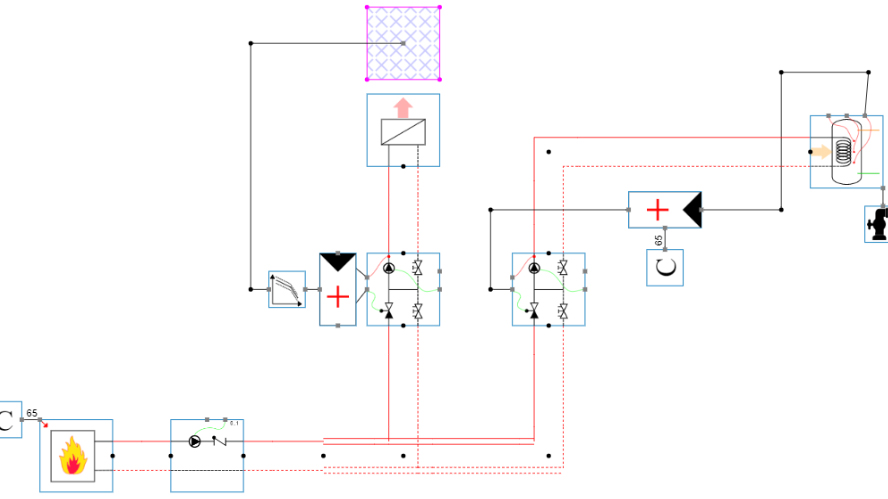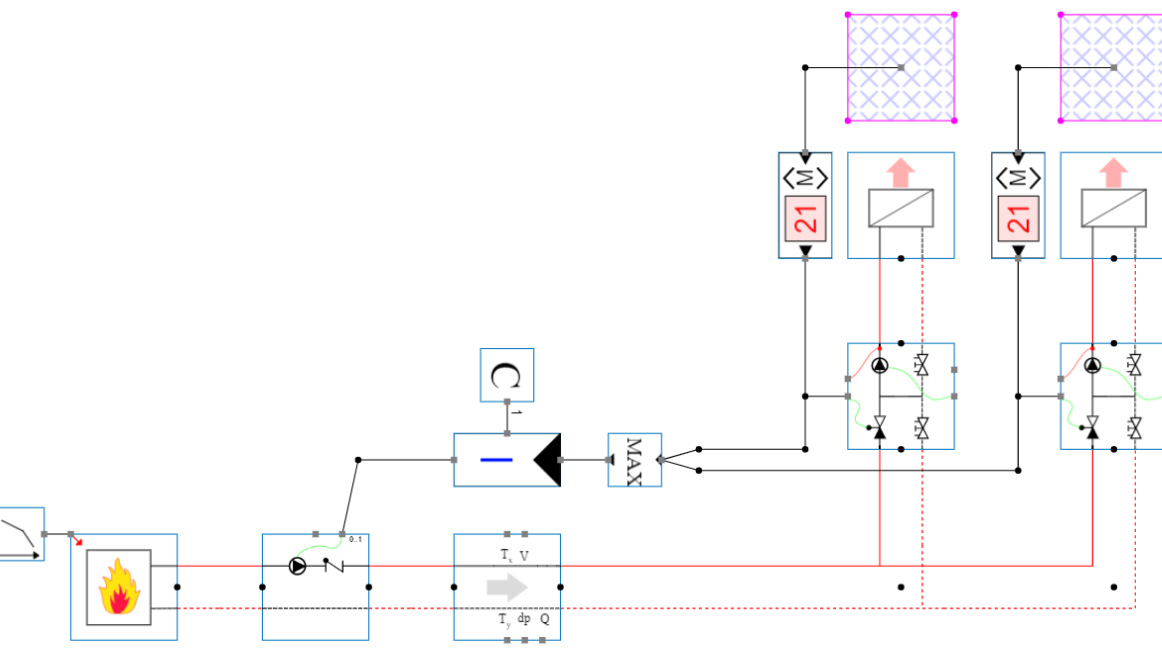Why Correct Heat-Exchanger Modelling Matters
Heat exchangers lie at the interface between primary and secondary circuits. Their performance relies on stable flow conditions, adequate temperature difference (ΔT) and predictable hydraulic behaviour. When circuit resistance shifts or flows vary unexpectedly, the exchanger can no longer deliver its nominal output.
Engineers often assume the heat exchanger will perform according to its datasheet regardless of system behaviour. In reality, the hydraulic environment heavily influences capacity. Understanding the characteristics of heat exchangers (HX) helps explain why flow, ΔT and circuit balance must be considered together.
Hydraulic Conditions Define Heat-Exchange Performance
Even a perfectly selected exchanger underperforms when the system does not supply the correct flow or temperature lift. Flow follows the path of least resistance, so hydraulic balance is essential. Components such as balance valves help ensure both primary and secondary circuits receive the intended flow, protecting ΔT and thermal stability.
The pipe network also plays a major role. The resistance defined in piping dictates how flow divides between parallel or coupled circuits. Poorly designed layouts can create mixing, bypassing or over-circulation, all of which degrade the heat exchanger’s effective capacity.
A well-designed hydraulic environment ensures:
- the correct flow rate on both sides
- stable temperature difference
- predictable control valve behaviour
- consistent operation across different load conditions
Part-Load Operation Is Where Most Problems Appear
Heat exchangers rarely operate at their design point. Most of the year is spent in part-load conditions where valves modulate, pumps reduce speed and circulation changes dynamically. If pump behaviour is not aligned with the system’s needs, the exchanger may receive too much flow (collapsing ΔT) or insufficient flow (starving its ability to transfer heat).
Pump adaptation is handled through pump control. When the pump reduces head appropriately during low demand, flows remain within the exchanger’s efficient zone. If head remains too high, the exchanger becomes flooded with flow, reducing temperature lift and overall system performance.
Part-load modelling also highlights issues such as:
- temperature drift due to bypass paths
- increased return temperatures
- unstable control loops caused by erratic flow behaviour
- misalignment between pump curve and circuit resistance
Accurate modelling ensures the exchanger delivers reliable performance throughout seasonal variations.
Designing Systems That Support Efficient Heat Exchange
To achieve stable and efficient heat exchange, engineers should:
- maintain balanced resistance between circuits through appropriate valve selection
- design the piping layout to prevent unintended mixing or bypass flow
- apply the correct pump control logic so flow aligns with thermal needs
- verify ΔT under all relevant part-load conditions, not only at design
- ensure the hydraulic separation between circuits remains meaningful
With these measures in place, heat exchangers perform consistently, delivering the expected capacity while supporting overall system efficiency.
FAQ: Heat Exchangers in Hydronic Systems


.jpg)

